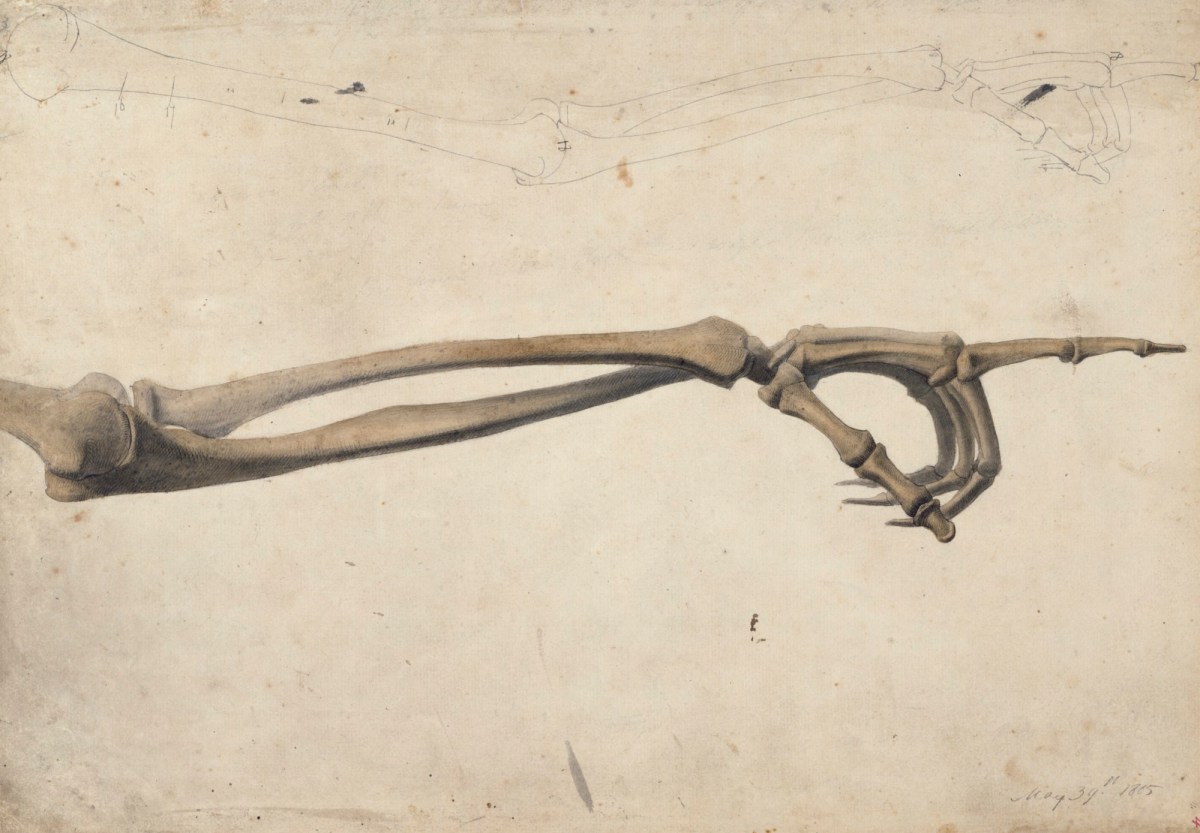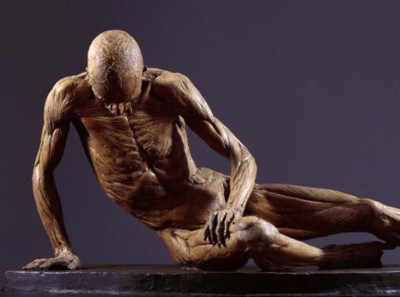
Benjamin Robert Haydon, Anatomical drawing of the bones of the lower arm, 31 May 1805.
Pen and black ink with brown wash on off-white paper. 466 mm x 323 mm. © Photo: Royal Academy of Arts, London.
This image is not available to download. To licence this image for commercial purposes, contact our Picture Library at picturelibrary@royalacademy.org.uk
Anatomical drawing of the bones of the lower arm, 31 May 1805
Benjamin Robert Haydon (1786 - 1846)
RA Collection: Art
This group of anatomical drawings was produced by Haydon during an intensive period of study between 1803-1806. He later assembled these works in an album and used them to teach his students, most notably Edwin Landseer and Charles Eastlake. A scribbled note on one of the sheets records that Haydon presented the album to one of his last pupils, David Nathan Fisher. The album was later acquired by J. H. Smith, a Victorian collector, and bequeathed to the Royal Academy by his grandson Gilbert Bakewell Stretton in 1949.
The drawings fall into three main groups. Representing Haydon’s first foray into the study of anatomy, some are copies after the illustrations in Albinus's Tables. Haydon acquired a copy of this book in 1803 before he left home to study at the Royal Academy. Typically unperturbed by lack of funds, he bid at auction for a copy of Albinus's seminal treatise. Persuading his reluctant father to pay for the book, Haydon savoured the ‘delight of hurrying it away to my bedroom, turning over the plates, copying them out’.
Haydon moved to London in 1805 where he enrolled at the Royal Academy Schools and was enthused by the highly-charged atmosphere fostered by the Keeper, Henry Fuseli. However, he was disappointed with the lack of anatomical instruction there. The second group of drawings are studies of specimen bones and muscles made in the summer of 1805 when Haydon was called home to Plymouth because his father was seriously ill. Arriving at the Royal Naval Hospital to find his father already recovering, Haydon immediately sought permission to draw from the hospital's collection of preserved human bones with dried muscle. He drew obsessively, combining his study of the specimens with poses typically found in anatomical textbooks.
The final group are a striking but macabre set of drawings almost certainly dating from the winter of 1805-1806 when Haydon took part in dissections held by a surgeon in Hatton Garden, London, and, along with David Wilkie and other RA students, attended demonstrations by the Scottish anatomist Charles Bell. The drawings are a marked departure from Haydon’s stylised rendering of bodies from illustrations and specimens. Using either red chalk on brown paper or inks with wash on a pale ground, he produced fluid and spontaneous effects.
Over time Haydon became convinced that the study of anatomy was the key to understanding the 'principles of heroic form' and therefore the key to success in painting grand historical compositions. Haydon prized these drawings, using them to teach his pupils and also as the basis for his lectures in the 1830s. The lynchpin of all his art and theory, anatomy formed part of Haydon's battering ram against the Royal Academy, which he came to regard as ‘a stumbling block and coiled snake'.
Object details
466 mm x 323 mm
Start exploring the RA Collection
- Explore art works, paint-smeared palettes, scribbled letters and more...
- Artists and architects have run the RA for 250 years.
Our Collection is a record of them.



